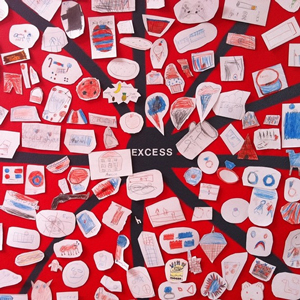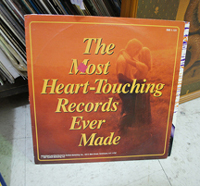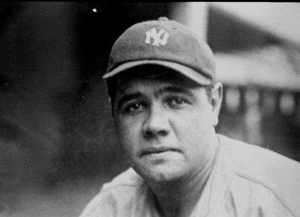
Source: Excess, Steve Woolf, Flickr
Hyperbole comes from a Greek word meaning “excess.” Writers use hyperbole for emphasis or effect. They create obvious and intentional exaggerations to make a point. Similar to a simile or metaphor, a hyperbole often includes comparisons. In fact, some hyperboles contain similes and metaphors, but you can tell when a hyperbole is being used because the words exaggerate or seem excessive in relation to what they are referencing. Study the examples below in which the speaker conveys a message by making an absurd or excessive claim.
- I'm so hungry I could eat a cow!
- You snore louder than a freight train.
- I have a million things to do today.
- The whole world was staring at me.
- The package took forever to arrive in the mail.

Source: Hyperbole, Ingrid Burrington, Flickr
These claims use hyperbole. Declaring that you could eat a cow is outlandish. However, this incredible assertion clearly conveys the immensity of the writer's hunger. Likewise, the whole world could not possibly have been staring at the speaker, but clearly this person felt embarrassed or exposed in public and used hyperbole to express this emotion.
To see some other fun examples, watch the following video.
Source: Hyperboles, kk rheingans, YouTube
Not only can hyperbole add color and humor to your writing, it also can be used to inspire, show dedication, or emphasize great emotion. Hyperbole may even be used to suspend the laws of science (at least, in language). For example, time doesn't actually slow down in Taylor Swift's song, but she is making a point: It feels like time slows down and everything stops when someone is in love.
For the next activity, click on each example of hyperbole in the statements below. If you choose correctly, the words will highlight.

You may have noticed that advertisers frequently use hyperboles. A car manufacturer might claim to “break traffic laws" to satisfy its customers faster than the competition. A publisher might promote a novel by describing it as “the greatest masterpiece of the twenty-first century.” An airline might promise “to go to the ends of the earth" to satisfy its customers. These advertisers are representing their products or services as disproportionately better than those of their competitors by using hyperbole.
Now take a look at the use of hyperbole in a nonfiction excerpt from a 1926 New York Daily News article by Paul Gallico, who describes Babe Ruth’s legendary visit to a young boy in a hospital. While there, Ruth promises to hit a home run for the boy.

Source: Babe Ruth, pdimages, Wikimedia
The door opened and it was God Himself who walked into the room, straight from His glittering throne, God dressed in a camel’s hair polo coat and a flat, camel’s hair cap, God with a flat nose and little piggy eyes, a big grin, and a fat black cigar sticking out of the side of it.
Gallico exaggerates Babe Ruth’s importance and his effect on the boy by portraying the baseball great as “God Himself” who came “straight from His glittering throne.” Not only is “God Himself” a hyperbole, but it is also another figurative device that is used to make comparisons—a metaphor. (Incidentally, Ruth makes good on his promise, and the boy recovers from his illness.)
In the exercise that follows, read the quotation and then click on the choice that contains an hyperbole. Pay special attention to the purpose of the writer or speaker as you read the explanation for each correct response.

Did you note the purpose for each statement in the exercise above? Clark and Bird both wanted to entertain their audiences and tried to get a laugh by exaggerating numbers (9 million awards shows, 3000 miles). Pitts sought to entertain his readers while also making the point that technology can be annoying rather than helpful.